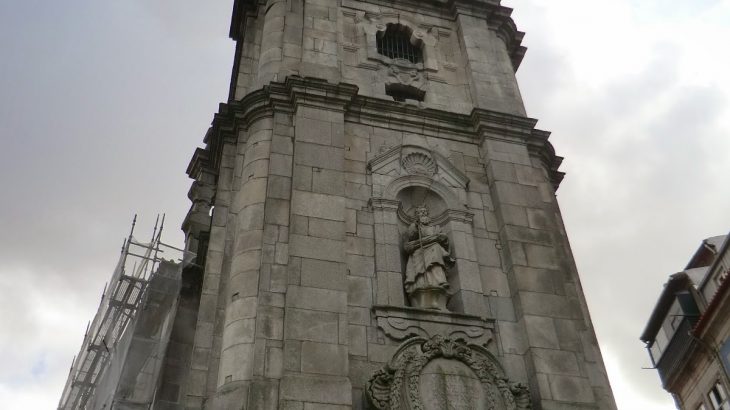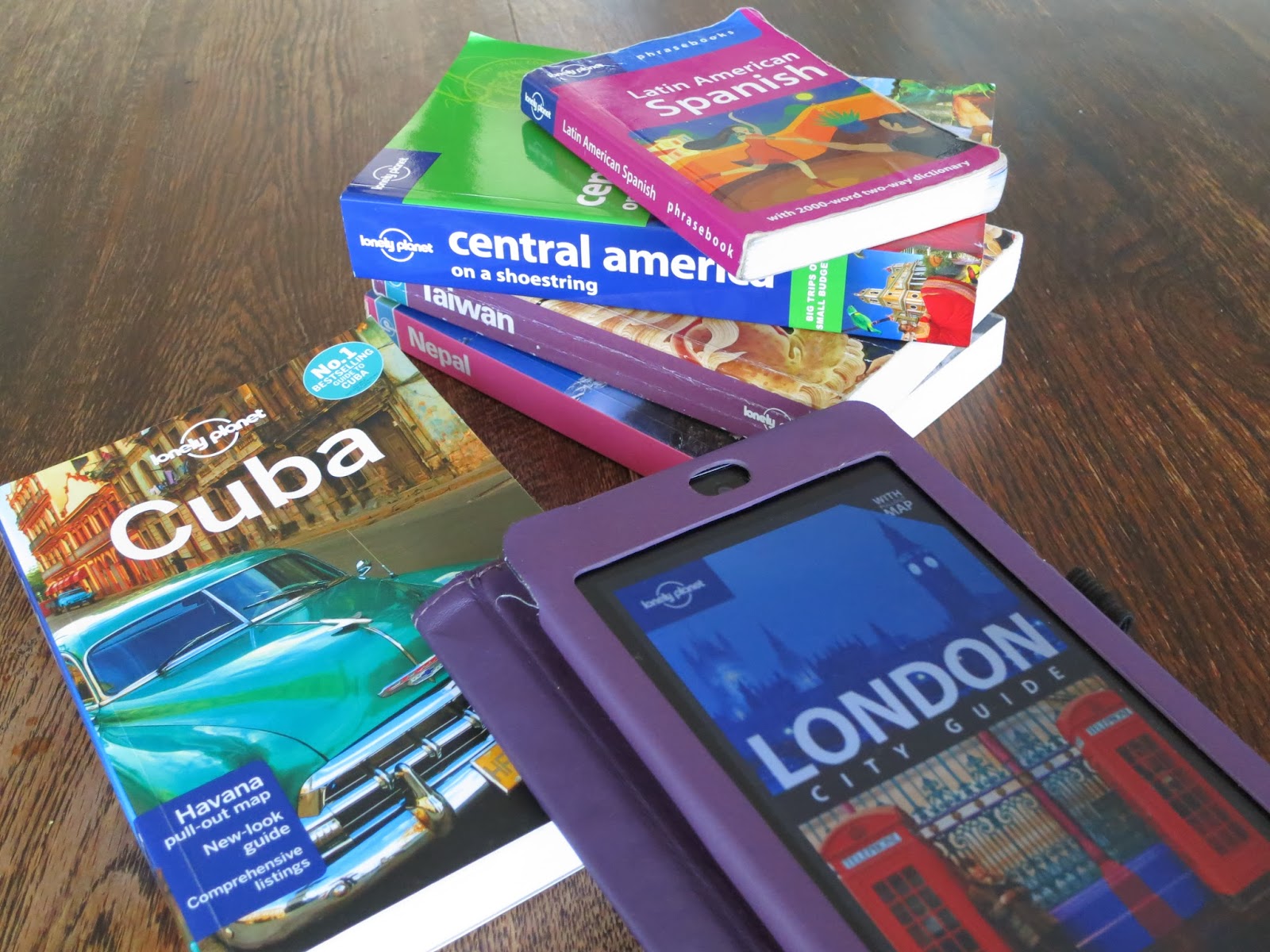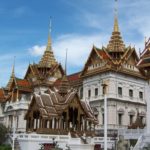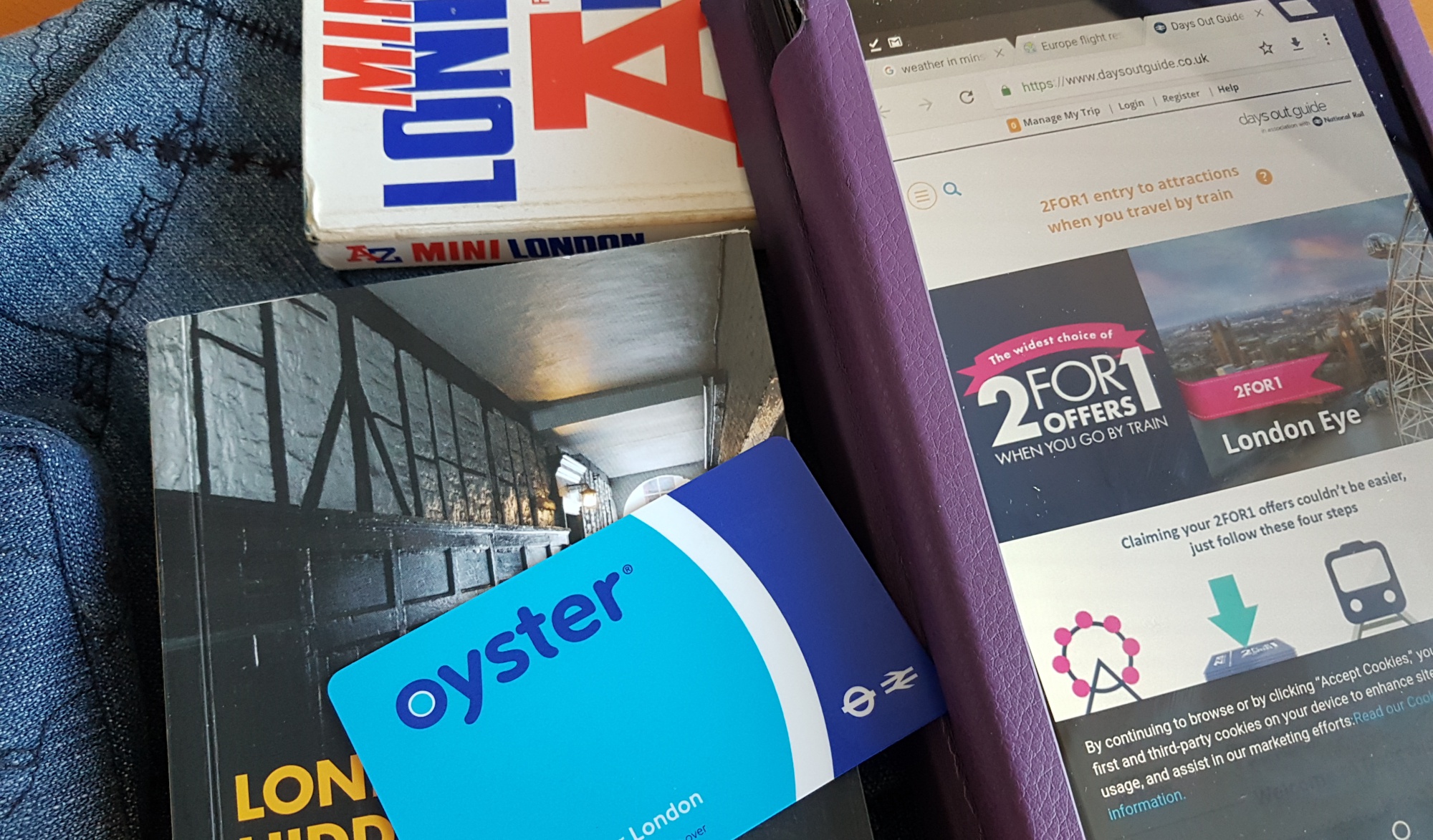I spent a month travelling through Portugal in 2013 and was particularly taken with Porto, and of course its famous tipple. What I didn’t realise at the time is that as well as being a UNESCO World Heritage Site, the city is often referred to as Oporto; as my dad shared with me following a recent visit.
There’s plenty more that I missed during my few weeks travelling through Portugal. So, today I have a guest post, from my dad, to share with you some of hidden Portugal (including Amerante, Barcelos and Santiago de Compostela) and their rather unique shaped foodstuffs. It seems there is quite a bit of Portugal to add to my list for a return visit.
Our first included tour, through hidden Portugal, was to Oporto. The first stop was the Clerigos Church, famous for a tall bell tower with 225 steps.
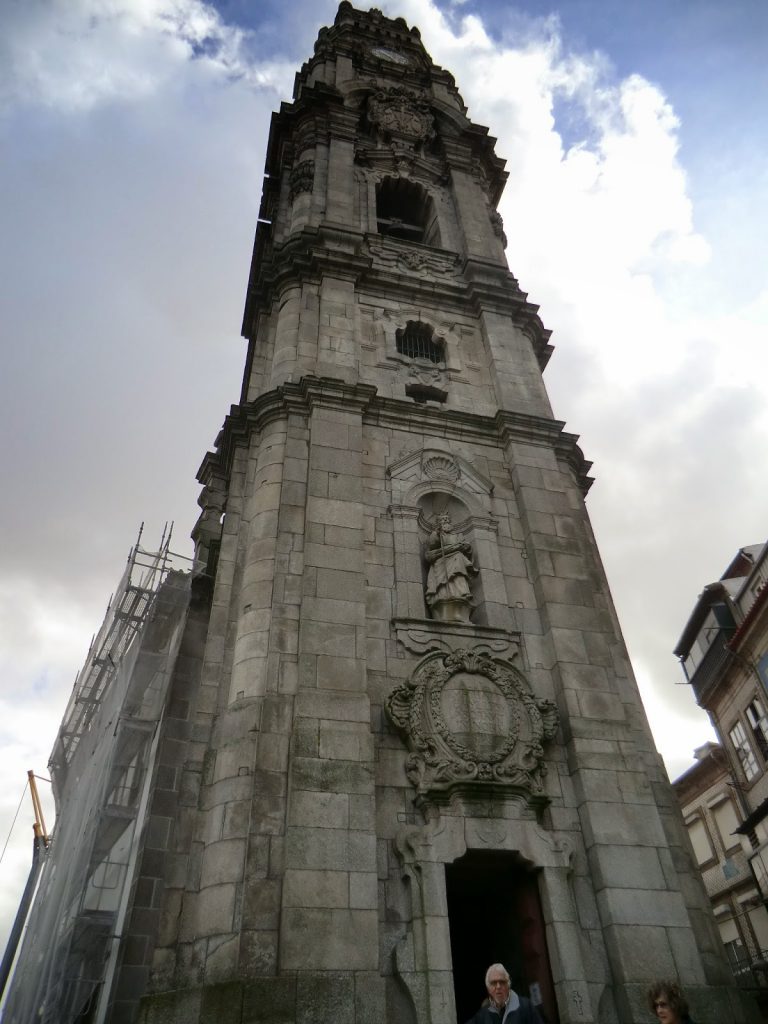 |
| Clerigos Church |
It is possible to climb the tower but we did not have time, so had a quick look at a slightly erotic statue in the nearby square, which commemorates a famous local writer.
Next stop was Liberty Square, with a quick look in the sumptuous McDonalds restaurant, complete with chandeliers.
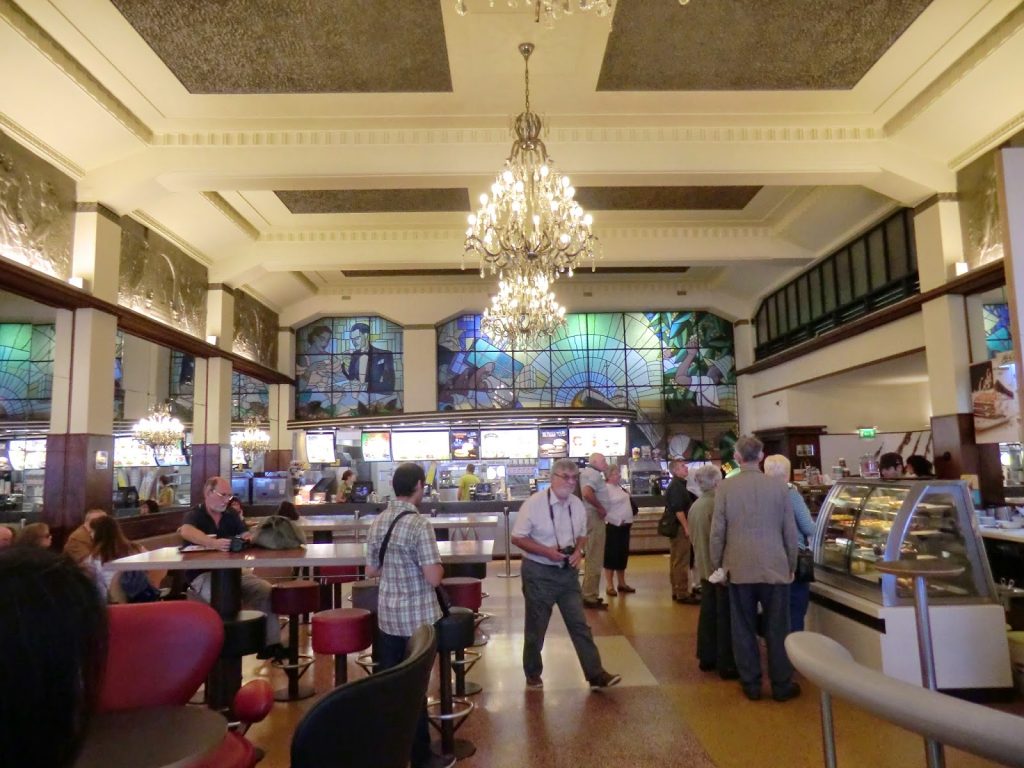 |
| A McDonalds worth a visit |
The coach then drove across to the opposite bank of the Douro to the Gaia area, where all the port cellars are located.
We were booked on a tour of the Sandeman lodge. Our guide was dressed in the trademark cloak and hat.
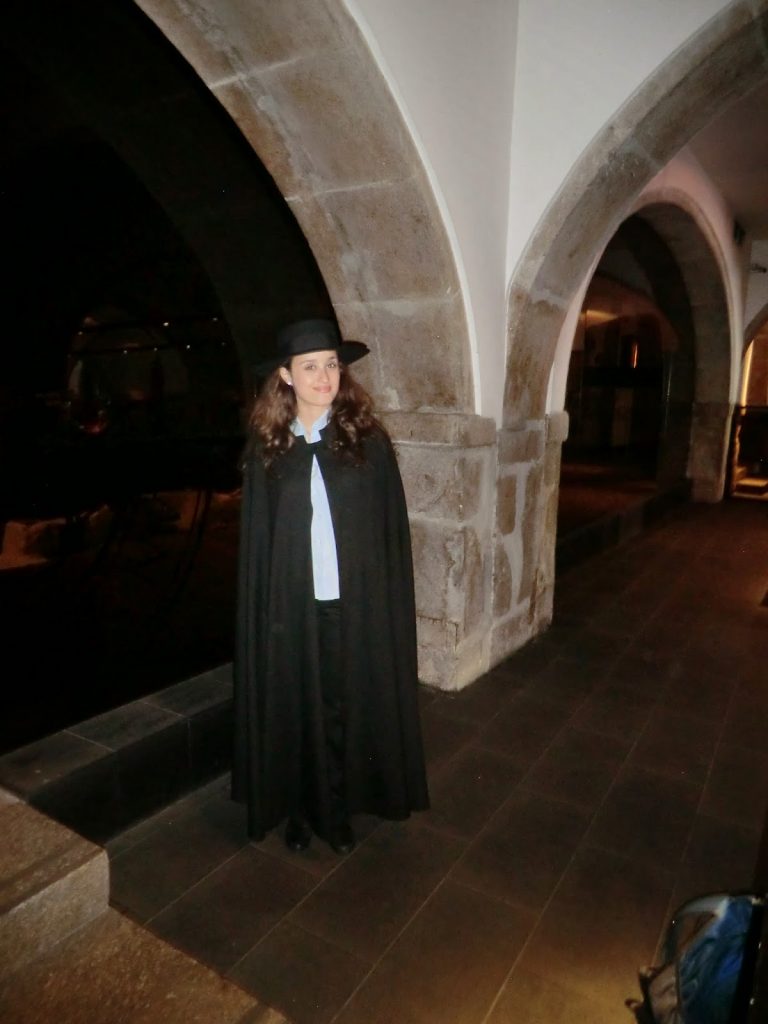 |
| Sandemans guide |
She explained the production methods and we walked around cellars where the giant casks are aged. Then we returned to the restaurant area for a tasting.
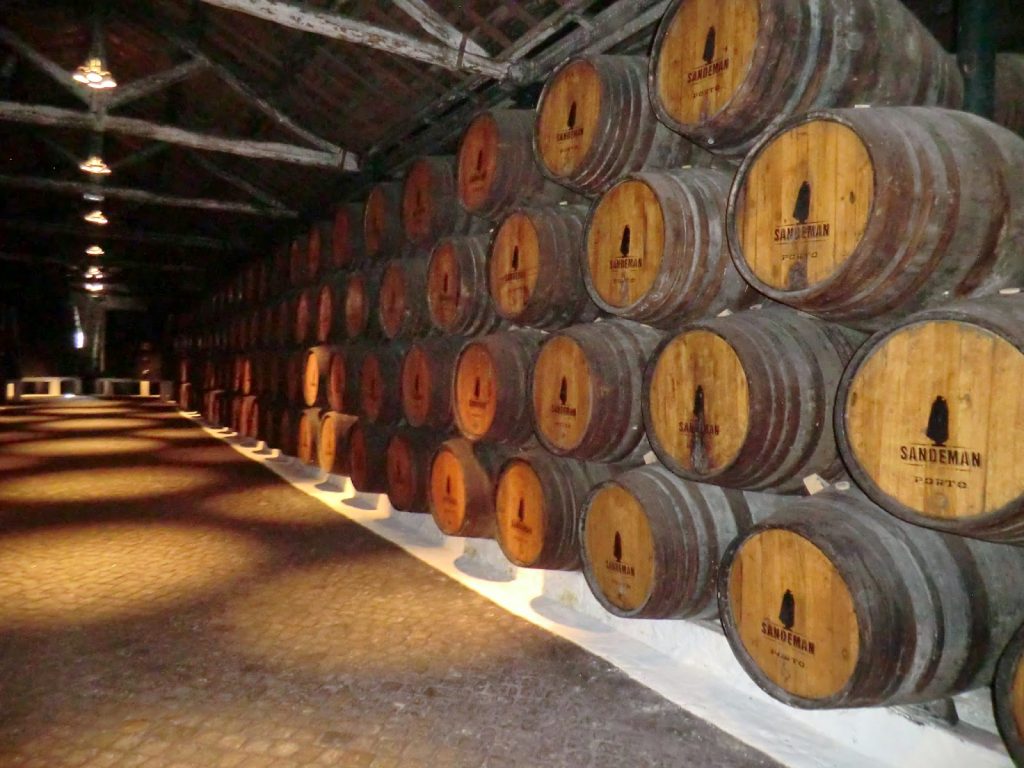 |
| Bodega’s |
There is of course a well-stocked shop. One thing to note, like many places in Portugal, the attraction shuts for lunch, so it might not be a good idea to book the last tour of the morning if you want to buy anything. Later we took an optional boat ride on the Douro, which allows a good view of the opposite river frontage and various bridges.
Amerante
The small town of Amerante, is where a lively local market is held on Wednesdays and Saturdays. Our guide ‘warned’ us rather coyly that a rather unusual cake (doces falicos) is produced here.
 |
| Doces falicos – needs no translation?! |
These are presented by young men to their girl-friends on the festival of Sao Goncalo. It is rather a strange custom, as the town is regarded as very conservative in its outlook.
The coach then drove over the hills around the Douro valley to a small farm (Quinta de Pacheca) which produces wine and port. The grapes are still crushed by the traditional stamping process, but we were assured that everyone washes their feet first. After the tour generous samples of port were produced for tasting.
Barcelos
A pretty town with the largest and oldest market in Portugal. It is also famous for a story about a cockerel which crowed and saved an innocent man from execution.
Unfortunately, things went wrong soon after we stepped off the coach. My wife was standing outside the tourist office whilst I took some photos of the above-mentioned model cockerels inside when she was suddenly pushed over and had her bag ripped open. Luckily, the thief only got a small purse with some Euros and credit cards, but it was not very pleasant. So instead of walking around the market, we spent the rest of the visit filing a report in the police station.
In the afternoon we went to the sanctuary of Bom Jesus on the outskirts of Braga. This pilgrimage site has a very impressive baroque stairway in front of the church.
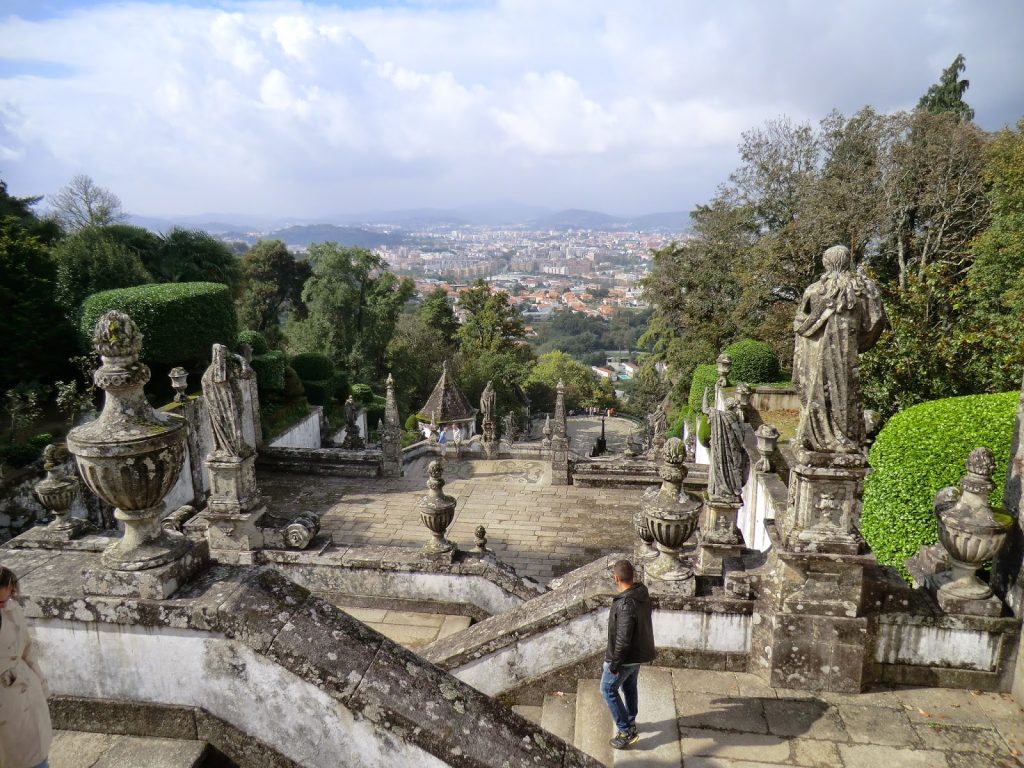 |
| Bom Jesus sanctuary |
Exploring out of the cities
Next day the first stop was the Peneda Geres National Park, way up in the hills. Noted for wolves and eagles, it is a favourite hiking area. The visitor centre showed a short video about the park, but to be honest there was nothing else to see except some rather splendid toilets with slate walls. The region does have a special breed of dog, wild horses and an attractive caramel-coloured cow, though and we did see the cows on the way back.
This was a showery day and the coach then had to negotiate some very steep and narrow roads as we drove through the Vinho Verde wine area. This is a young white wine, grown in terraced vineyards, mainly drunk with seafood. Some red is also produced.
Our destination was Ponte de Lima, which we reached at lunchtime. Some of the smaller shops on the river frontage stayed open, no doubt to catch the tourists and we bought some vinho verde and some choritzo- type sausages to take home. There were also large salted cod used for the national dish of bacalhao on display.
Blood features heavily in Portuguese cuisine. Chicken cooked in its blood is a favourite here.
Lima, an old Roman town is very attractive, with a long bridge over the River Lima. On the far side are a small church, a pottery, and a pleasant public garden. On the water front are some statues of local country folk and some one-dimensional Roman soldiers.
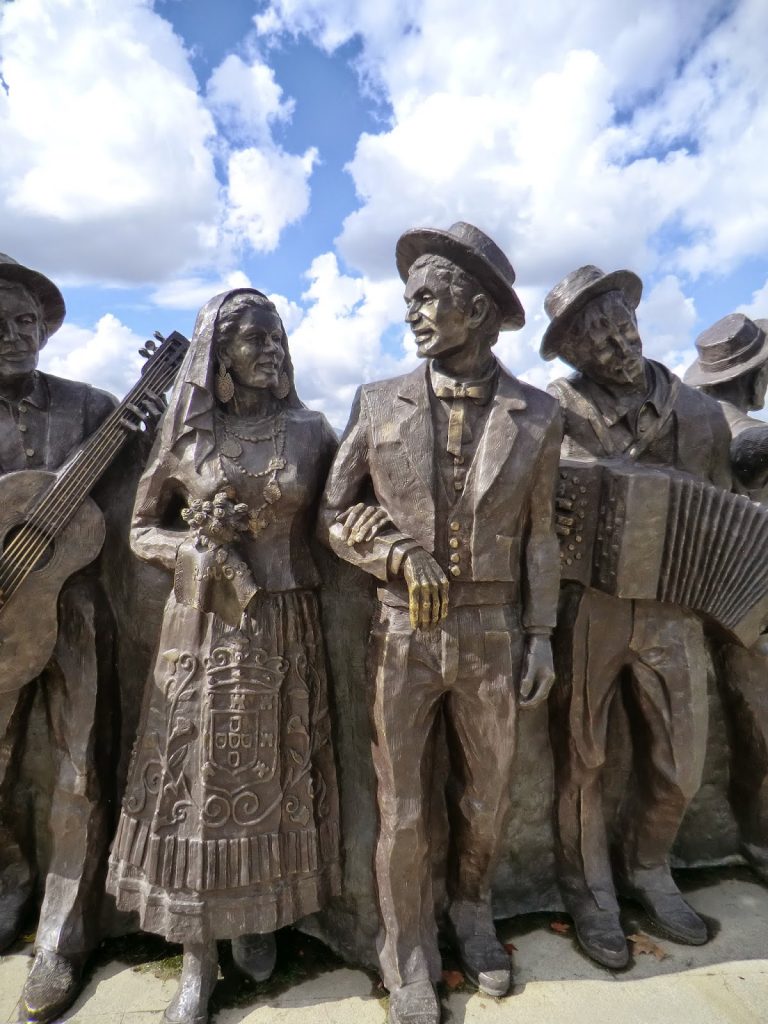 |
| Local country folk |
I would suggest that P. de Lima was the most attractive of the Portuguese towns we visited today.
Monuments and folk dancing
Today we visit Viano de Castelo to see the Confraria de Santa Luzia. Set on a hill top, this religious monument has an impressive view from the courtyard. In fact National Geographic rates it the third best view in the World, which may be an exaggeration. Then we drove into the town for a brief stop.
Moored on the waterfront was the ex-hospital ship ‘Gil Eanes’ which used to serve the North Atlantic Portuguese fishing fleet. It is now a museum, although currently closed for repairs. Further along is a modern monument in the form of a broken chain, known as the 25 April Arch, celebrating the bloodless revolution, when the dictatorship was overthrown.
The highlight of the visit was a display of folk dancing in the main square. The local girls were showing off the fine filigree jewelry produced in the town.
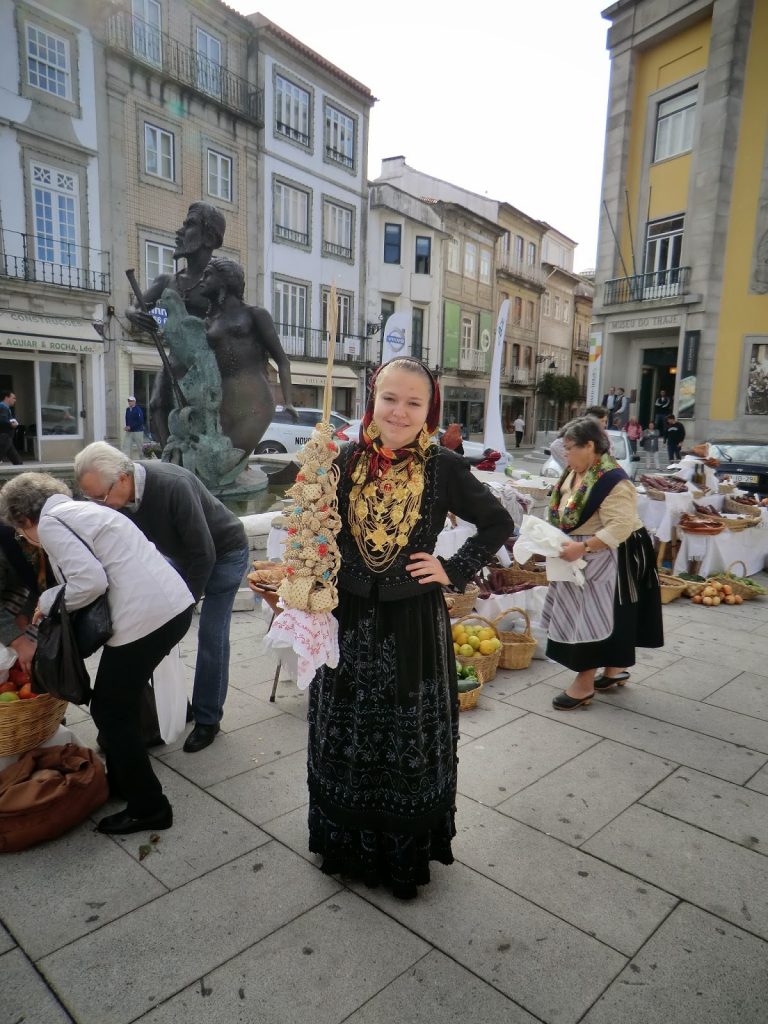 |
| Fine filigree jewellery |
There is also a very good display of costume in the museum here, together with a filigree workshop display.
We also paid a visit to Valenca de Minho, an odd town which is packed with fabric shops selling ‘bottom drawer’ items like towels and sheets. Not much to see apart from the city walls and ramparts. It is popular with Spanish tourists coming across the border for a day out at cheaper prices and has quite a few restaurants, some with touts outside.
Santiago de Compostela
Across the border to the pilgrim city of Santiago de Compostela. As we left the hill top hotel, someone in the group remembered that they had left their passport in their room. The heroic coach driver then reversed the coach back up the narrow lane for about a quarter of a mile, although it might have been quicker if the person involved had run back!
Anyway, passport retrieved, we drove on the motorway up through northern Portugal.
The road system is fantastic, the result of EU funding and perhaps a bit of political corruption, hinted at by our guide. No doubt the tax payers of Germany made a substantial contribution but the roads were traffic-free, even at weekends. The M25/ M20 it is not!
After the passport upset, our guide played a little joke on us. As we passed over the bridge marking the Portuguese/Spanish border she said everyone should hold up their passports to the coach windows for ‘inspection’. Schengen Accord anyone?
When we reached Santiago, the coach unloaded us in the covered bus station and we walked to the cathedral, meeting quite a few pilgrims who had probably made the 500 mile trek from France on the Scallop trail (Caminho). There were also quite a lot of beggars, with pleading notices in front of them, but they were not aggressive in any way.
The area around the cathedral has many tapas bars and restaurants, specialising in octopus, barnacles, scallops, monkfish and other sea food delicacies. Actually, there was not much to suggest Spain is still in recession. Maybe those German taxpayers are still helping out Club Med or the area gets special central Spanish government funding to discourage thoughts of independence?
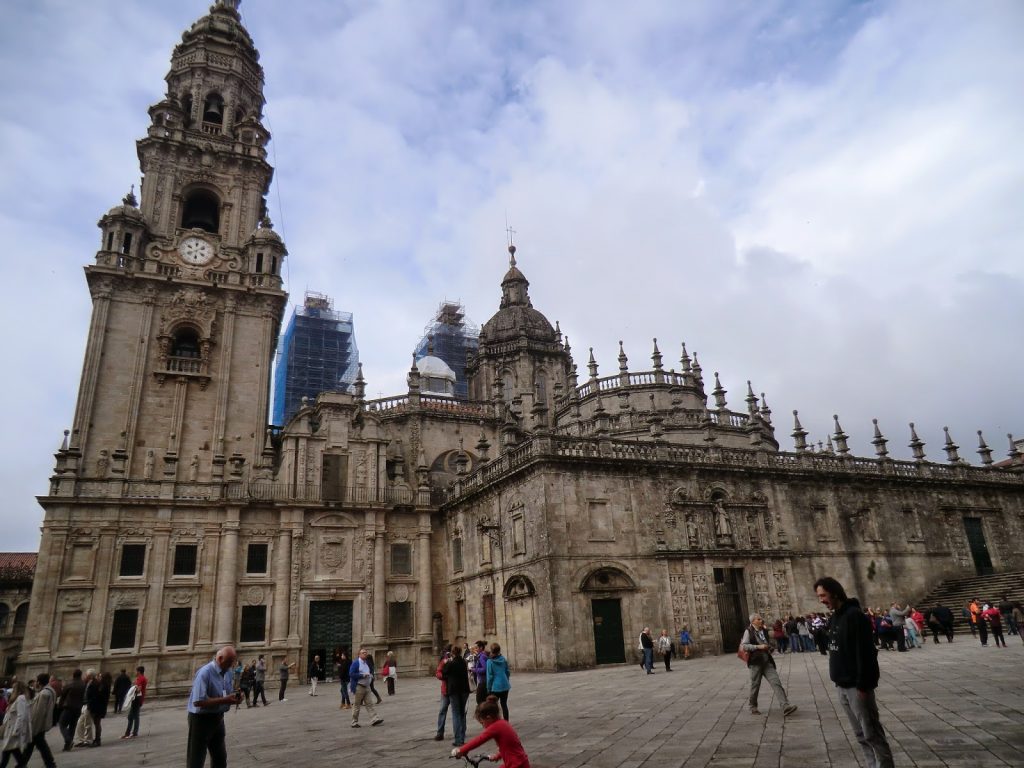 |
| Santiago del Compostela cathedral |
The entrance to the cathedral is a bit complicated, depending on mass times etc, but it was certainly free after lunch. Although some repairs were going on, it was still very crowded with a long queue to view some ‘relics’ which we skipped. The most impressive item in there was the giant incense burner (Bota fumeiro) originally designed to mask the smell of the sweaty and unwashed pilgrims who actually lived inside the building during their stay. Now it is lit and swings on special days, although, apparently a donation of 300 euros to the church will also get it moving!
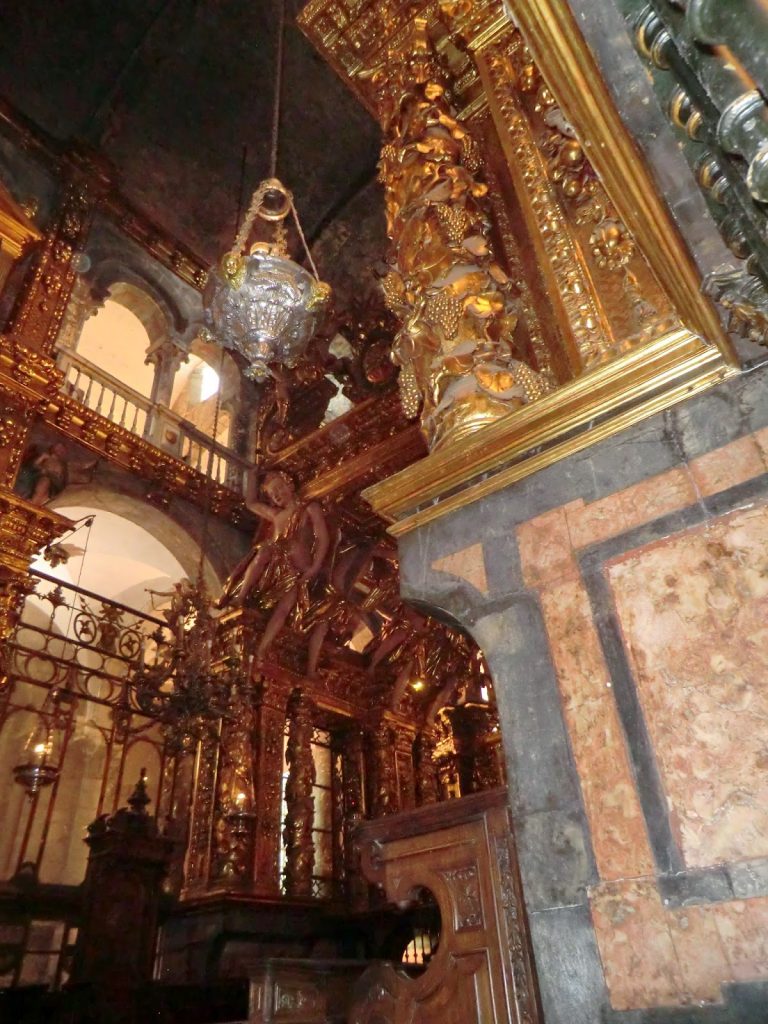 |
| Bota fumeiro |
Leaving the cathedral we wandered around the streets and bought a local cheese called a ‘tetilla’. This is either plain or smoked, with a mild taste. It is shaped like a tear drop or a female breast.
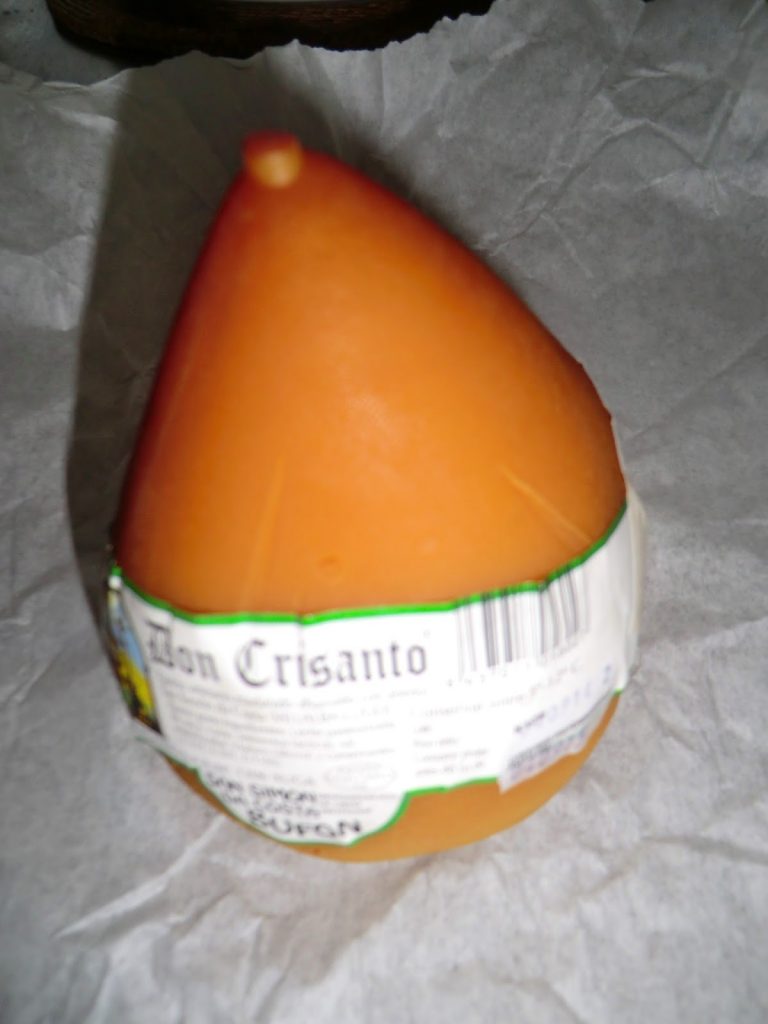 |
| Tetilla cheese |
Legend has it that a local priest objected to a sculptor depicting breasts on a statue at the cathedral, and insisted that he give her a mastectomy. The locals were so incensed that they decided to spite the priest by making a breast-shaped cheese. Well, actually the cheese producer makes no mention of this on their website, but it makes a good story and no doubt sells a lot more of this rather bland product to the tourists.
Overall, this was a good trip, although the weather was a bit ‘April showers’ and we could have done without the mugging. We would definitely recommend Portugal as a holiday destination in the cooler months.
